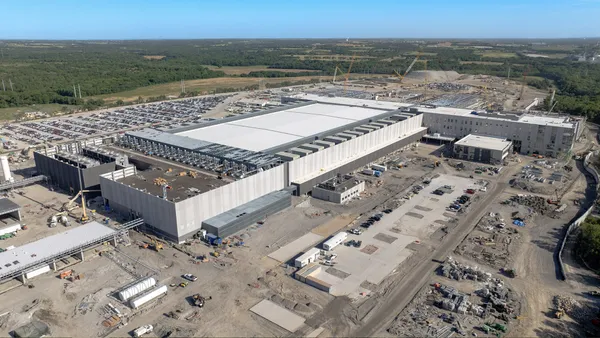Do you ever feel like you must maximize every second of every day but then find yourself caught up in inefficient processes? You're not alone.
We know it's a common challenge for project managers and site supervisors to lack visibility across typically disconnected systems. However, there are ways to get up-to-date information from jobsites that simplify the process and let you take care of the things that really matter. Many of you have already invested in machine control and are looking for ways to pass information back and forth automatically and without complicated handoffs.
When we talk about connectivity as it relates to civil construction, we're talking about connecting the digital and physical worlds – connecting users to the machines and connecting the office to the field.
As Trimble General Manager Patrick Stevenson puts it, "earthmoving projects are complex – having the right technology could mean the difference between projects staying on-schedule and on-budget." So when looking for jobsite connectivity tools, it's essential to look for capabilities that include:
- Estimating earthwork and material quantities for bids
- Data preparation for construction takeoff
- Building 3D models to optimize machine operation, tracking productivity, and delivering first-class as-built documentation
- Tracking work completed vs. work remaining to save costs
- Accurately and remotely jobsite monitoring and real-time progress-to-plan
- The ability to make instantaneous changes to designs and send them to the field
What results can you expect from connecting your solutions? Well, benefits include:
- Real-time field-to-office site productivity data
- Efficiency across the organization
- Enhanced visibility of jobsite status for site supervisors
- On-time project delivery, reduced budget, and costly delays
Real-time field-to-office site productivity data
Connecting all workflows of your construction project, from design through to construction on-site, allows data to flow seamlessly and provides transparency. Having full visibility of what is happening on-site, and confidence that everyone is working on the same and most up-to-date plan offers considerable peace of mind.
Efficiency across the organization
Ever had a breakdown in communication that resulted in catastrophe? We've all been there, but there are solutions that can prevent unwanted outcomes. Limit the risk of miscommunication to and from the field with automatic data transferring, because in the civil contracting business, getting the job done right the first time is the target.
The most advanced construction operations take this one step further by ensuring that the flow of information is bi-directional. Not only can data be instantly sent to machines on the field but the data can also come back to the office to capture what is happening, in real-time, on the jobsite. Capturing digital as-builts is essential for understanding progress-to-plan and providing validation for the work completed. It is becoming more widely expected across the industry, often being stipulated by project owners on the original tender.
Enhanced visibility of jobsite status for site supervisors
The ability to monitor machines in real-time, the next day, or at any point in the project can give you the confidence needed to remotely execute the jobs and further limit management jobsite visits. It also enforces the ability for site supervisors to confidently assess where projects are in real-time as well. For example, having a jobsite tool that calculates cut/fill quantities by comparing survey ground to designs, in under a minute.
On-time project delivery, reduced budget, and costly delays
Maybe you'd drive 5 hours to a site, but now you can remotely send designs and files and monitor which model is being used ahead of time. Time is money and connecting your jobsites and back-office operations allows you to make every second count. In a competitive industry, it could be your winning edge.
Costly rework can be avoided, as can time spent traveling between sites and machine idling. The remote insight into what is actually happening onsite, and being able to compare progress-to-plan, allows changes to be verified and the back office to respond quickly to keep the schedule and budget on plan. Knowing where your cash is flowing during the entire construction project is another crucial piece to connectivity.
What's next?
Leveraging the cross-functional potential of cutting-edge construction technology can give companies the power to maximize the value you provide your customers via the industry's most seamless, cost-efficient software platform. A connected jobsite requires workflows that seamlessly integrate together so you can create accurate construction-ready models, transfer real-time, updated jobsite design information, and have confidence you're working with the latest designs.
The importance of maximizing the uptime of your jobsite is obvious; unplanned downtime is damaging. It means you're not progressing and your revenue and profit is on hold. Download our step-by-step guide to learn more about how to achieve jobsite connectivity.










